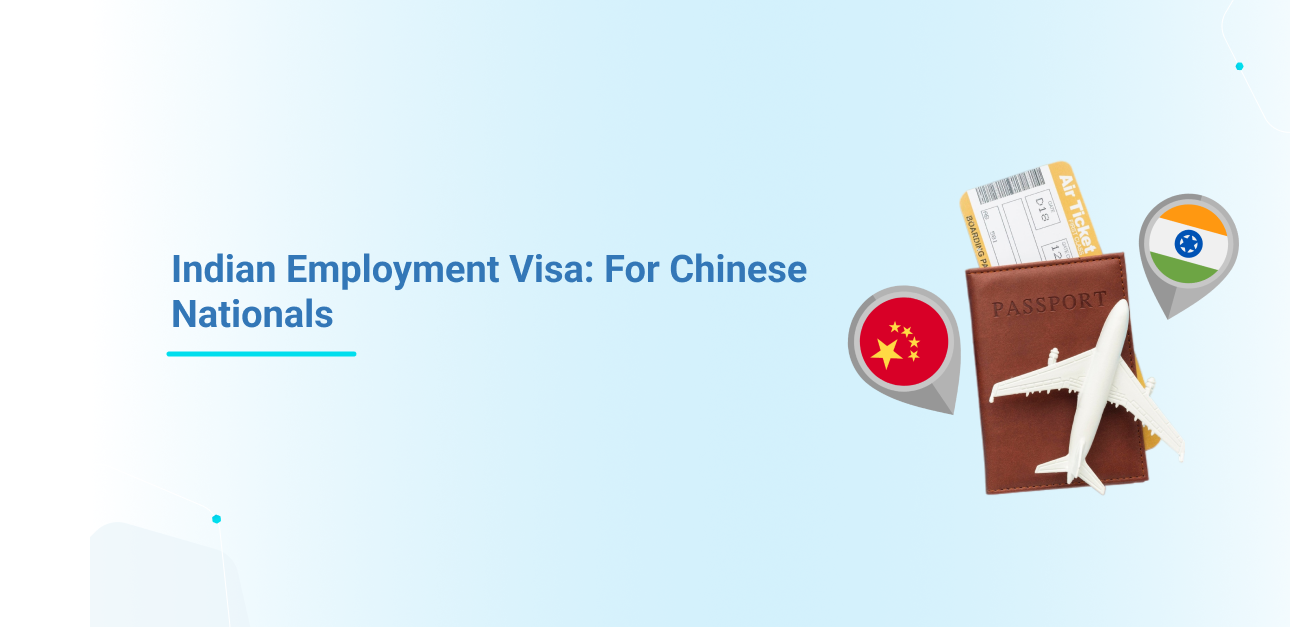Indian Employment Visa for Chinese Nationals: Insights 2024

India and China, two economic giants, share a complex relationship—one that oscillates between cooperation and tension. Against this backdrop, the issuance of employment visas for Chinese nationals assumes significance. India issued only 2,000 visas to Chinese nationals in 2024, down from about 200,000 before the pandemic in 2019. Such strict visa regulations have caused setbacks in projects of corporate giants, such as the Tata Group and Dixon Technologies, who required Indian employment visas for Chinese engineers. Even domestic manufacturers are troubled by this issue, facing high costs that prevent investment and diminish Indian company’s standing as trustworthy suppliers. Additionally, several leading Chinese smartphone brands don’t have their India CEOs in the country since their visas are not getting approved by the Indian Government.
Historically, India has maintained a cautious approach to issuing visas, particularly for Chinese officials and expats. The visa issuance process for other nationalities is much less cumbersome and intricate than the process for Chinese nationals. This situation was further aggravated when the two nuclear-armed nations clashed on their Himalayan front in mid – 2020. As a result, India blocked virtually all Chinese visitors, expats as well as investments from the neighboring country.
In this article discover:
- Why securing an Indian employment visa as a Chinese national can be difficult, including strict documentation requirements and heightened scrutiny.
- How recent developments and reforms aim to streamline the visa process, particularly for technicians in key sectors.
- A breakdown of essential documentation needed for a successful application.
- Expert insights and considerations for navigating the process effectively.
Challenges In Obtaining an Indian Employment Visa for Chinese Nationals
For Chinese expats, securing an Indian employment visa can be an arduous task. Here's a breakdown of the hurdles they face:
- Stringent Documentation: The list of required documents for Chinese applicants is considerably longer and more detailed compared to other countries. While Indian consulates typically request personal identification, qualification documents, and employment-related papers like contracts and employer letters for most nations, the requirements are significantly more detailed for Chinese nationals. Any oversight or omission in documentation can cause significant delays in visa processing.
- Justification of Expertise: Indian consulates impose rigorous requirements for justifying the expertise of Chinese applicants, unlike standard visa applications that often only require basic educational or qualification certificates. This includes technical ability certifications, professional expertise certificates, and other experience-related documents that clearly demonstrate the applicant's capabilities and suitability for the role. These strict criteria result in longer processing times and increase the likelihood of application rejection if the documents do not adequately support the applicant’s qualifications.
- Heightened scrutiny: Following the COVID-19 pandemic and ongoing geopolitical tensions, Indian authorities have implemented stricter visa review procedures for Chinese citizens. This translates to increased rejection rates and longer processing times due to thorough background checks and document verification.
Recent Developments and Reforms
The government’s reluctance to approve visas stacked up production losses of US $15 billion for the electronics manufacturing sector alone in the past 4 years. Recognizing the critical role Chinese professionals play in vital sectors like manufacturing, the Department of Promotion of Industry and Internal Trade (DPIIT) in collaboration with Ministry of Home Affairs and Ministry of External Affairs initiated steps to streamline the visa process. The goal is to reduce the visa processing time from the current 4-5 months to within 30 days. A significant move in this direction is the establishment of a Standard Operating Procedure (SOP) specifically designed to expedite visa approvals for Chinese technicians involved in Production Linked Incentive (PLI) scheme projects, granting them visas for around 6 months. (As mentioned by media reports)
Additionally, faster business visas will be issued for technicians needed to run Chinese made machines installed in Indian factories in 14 sectors covered by a US $24 billion scheme to spur production of hi-tech electronic items.
As reported by Times of India, the most recent development in this arena has been the introduction of an online portal to streamline the visa procedure for Chinese technicians essential to the country’s PLI manufacturing scheme.
The government's commitment to reducing bureaucratic hurdles and facilitating smoother entry for skilled workers is crucial to India's industrial and technological advancement.
While specific requirements may vary depending on the Indian embassy or consulate, here's a general checklist for the core documents needed for a Chinese employment visa
Some points to note:
- It's crucial to consult the specific requirements of the Indian embassy where the application is being submitted. Discrepancies in documentation can lead to delays or rejections.
- Processing times can vary depending on individual circumstances, the current workload of the embassy, and geopolitical situations.
- Consider seeking professional guidance from immigration or visa consultants to navigate the complexities of the process.
Conclusion
While national security concerns are paramount, fostering a more efficient visa system for qualified Chinese professionals can benefit India's economic growth. As the world's largest democracy navigates this complex geopolitical landscape, striking a balance between security and economic progress will be crucial. The recent initiatives aimed at streamlining the visa process for Chinese nationals involved in PLI projects offer a promising step towards a more collaborative future.

